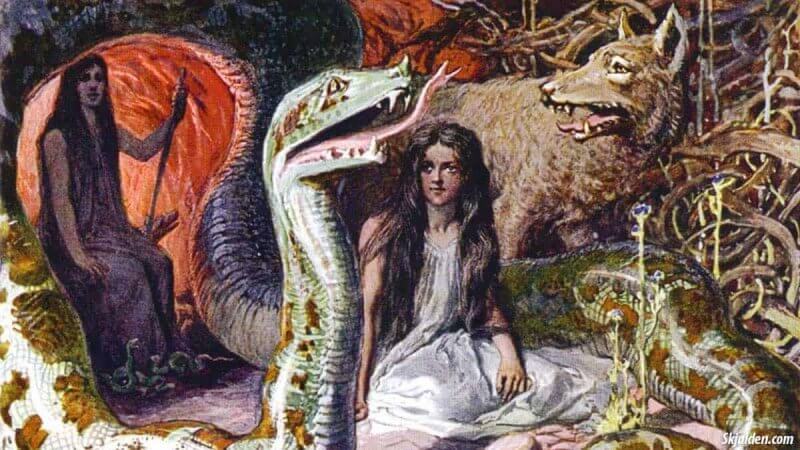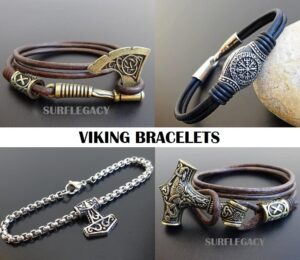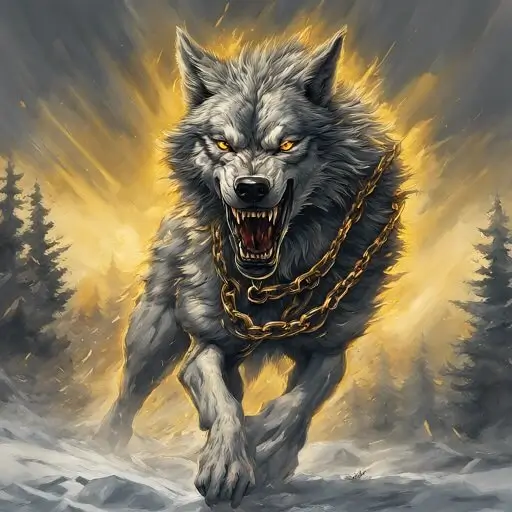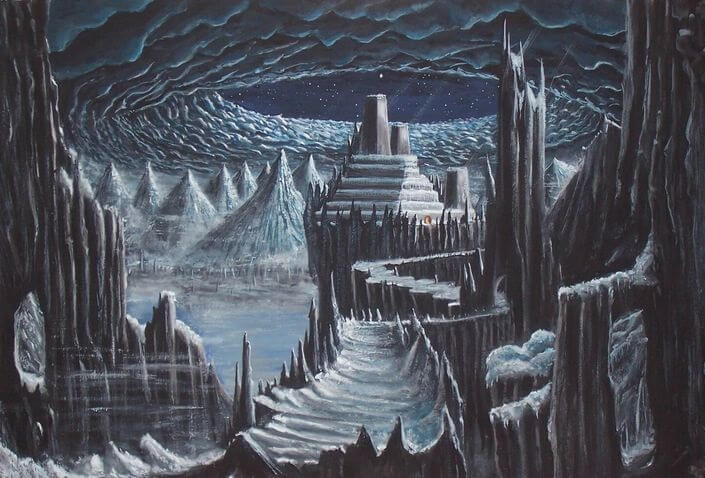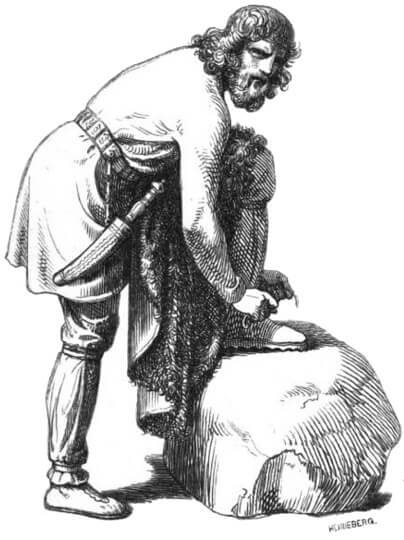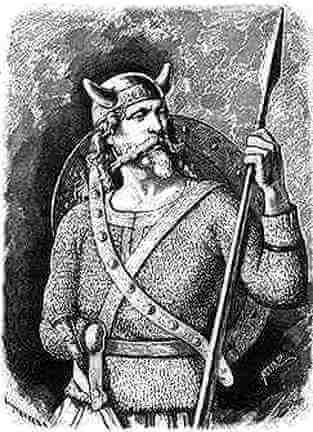Loki’s children were some of the most intriguing figures in Norse mythology. As the god of mischief, trickery, and chaos, Loki was known for his cunning and unpredictable behavior. His children, however, were equally fascinating, each possessing unique abilities and playing significant roles in Norse mythology.
In this blog post, we will take a closer look at the children of Loki and explore their individual stories and significance in Norse mythology.
Loki’s Children with Sigyn
The relationship between Loki and his Aesir wife Sigyn was marked by tragedy, as their children were also caught up in the violent struggles of the Norse gods.
One of the most tragic events in Norse mythology was the death of Balder, the beloved son of Odin and Frigg.
Balder’s death was caused by Loki’s treachery, and his subsequent punishment was severe.
The Aesir gods bound Loki to a rock and placed a venomous serpent above his head, causing him to writhe in agony. Sigyn remained by her husband’s side, catching the venom in a bowl to prevent it from touching Loki’s face.
However, the punishment did not end with Loki. The Aesir also turned their wrath upon Loki’s children with Sigyn, Narfi and Vali.
Little is known about Narfi and Vali, but their fates were just as tragic as their father’s.
Vali was transformed into a wolf, losing his senses and tearing apart his own brother Narfi. Narfi’s entrails were then used to bind Loki to his rock, perpetuating his torment.
This brutal retribution may seem like an eye for an eye justice, but it also highlights the cyclical nature of violence in Norse mythology.
It is a reminder of the cyclical nature of violence, as the actions of the gods often led to unintended consequences and further tragedy.
The story also highlights the complex and interconnected relationships between the gods, and the impact of their actions on the wider world. The death of Balder, Loki’s treachery, and the subsequent punishment of Loki and his children are all part of a larger web of mythological narratives, each influencing and shaping the others.
In this way, the story of Loki’s children with Sigyn is a microcosm of the larger themes and motifs of Norse mythology, a world of eternal conflict, cosmic cycles, and tragic outcomes.
Loki’s children with Angrboda
Loki’s relationship with the giantess Angrboda produced three monstrous offspring, causing fear and concern among the Aesir gods. These children were Jormungandr, Hel, and Fenrir, each with their own unique abilities and qualities.
Fenrir
Fenrir, the first of Loki’s children with the giantess, was a mighty wolf of immense strength and size.
His powers were such that no chains could hold him, and the Aesir gods feared the destruction he could wreak upon the nine worlds.
To avoid this, the gods decided to imprison him, but they were unable to overpower him due to his incredible strength.
Instead, they resorted to trickery, playing on his pride and convincing him to put the chains on himself to showcase his strength.
But twice the gods forged chains for Fenrir, and twice he broke free with ease. Realizing they needed something stronger, they sought the help of the dwarves, who created the unbreakable chain called Gleipnir.
Although the wolf was intelligent and suspicious, he eventually agreed to be tethered by the ribbon only if one of the Aesir placed their hand in his mouth as a guarantee.
Only the god Tyr was brave enough to do so, but he lost his hand in the process.
Despite his imprisonment, it is prophesied that Fenrir will eventually break free during Ragnarok and wreak havoc across the Norse worlds, devouring everything in his path, including Odin.
The wolf will ultimately be slain by one of Odin’s sons, but not before causing irreversible damage.
Jormungandr
Also known as the Midgard Serpent, was a massive serpent that had the ability to grow uncontrollably, with no apparent limit to his size.
Fearing the destructive power of Jormungandr, Odin flung him into the seas surrounding Midgard, where he continued to grow to an enormous size.
His size was so vast that he could encircle the entire world and grasp his tail in his mouth, giving him the name of the Midgard Serpent.
As per the Ragnarok prophecy, Jormungandr’s dropping his tail is one of the signs of the end of the world.
It is said that Jormungandr and Thor will slay each other during the final battle of Ragnarok.
The two are destined to kill each other, with Thor crushing the serpent’s head with his hammer Mjolnir and Jormungandr spewing his deadly poison onto the god before succumbing to his wounds. The venom spreads throughout the nine worlds, killing many of the gods and signaling the end of the world as we know it.
Jormungandr’s poisonous breath will also taint the nine worlds, causing widespread destruction and chaos.
Hel
Hel, the third child of Loki and Angrboda, is often depicted as a mysterious and enigmatic figure in Norse mythology.
Unlike her siblings, Fenrir and Jormungandr, Hel appears less physically monstrous but far more sinister. Half of her body is that of a beautiful woman, while the other half is a rotting corpse.
Odin believed that she was the perfect candidate to rule over the realm of the dead, Helheim, which became known by her name.
There she presides over the souls of the dead who did not die bravely in battle, waiting for Ragnarok, the end of the world.
When that day comes, it is said that Hel will lead an army of the dishonourable dead alongside her father Loki to confront the Aesir gods in a final battle.
Some believe that Hel may even seek revenge against the gods for their treatment of her family.
It is said that those who die of old age or sickness will be received by her in Helheim, where they will remain until the end of the world.
Despite being a fearsome figure, Hel’s role in Norse mythology is considered essential to maintaining balance and order in the cosmos.
She is a powerful and cunning goddess, with the ability to control the fate of the dead.
Those who end up in her realm are subject to her whims, and she can choose to either grant them mercy or inflict torment upon them.
While some view Hel as a sinister figure, others see her as a necessary part of Norse cosmology.
Without her, there would be no place for those who did not die in battle to go after death, and the balance between order and chaos in the universe would be upset.
In Norse mythology, Hel plays a crucial role in the events leading up to Ragnarok, the end of the world.
As she sails to Asgard alongside her father Loki and an army of the dead, she may be seeking to avenge the mistreatment of her family by the Aesir gods.
However, it is also possible that Hel is simply fulfilling her role as ruler of the land of the dead and that her actions during Ragnarok are simply a consequence of her duty.
Nonetheless, her presence in the final battle and her power over the fate of the dead make her a figure to be reckoned with.
Loki’s children with Svathilfari
Sleipnir
Sleipnir was born from the union of Loki in the guise of a mare and the stallion Svathilfari.
According to legend, a builder had offered to construct the wall around Asgard, the realm of the Aesir gods, in exchange for the sun, the moon, and the goddess Freya’s hand in marriage.
The gods agreed, but they set impossible terms, such as finishing the work within one season and without any help from others.
The builder accepted the challenge, and with the help of his strong stallion Svathilfari, he made remarkable progress.
Seeing that the builder was about to complete the wall, the Aesir gods grew worried that they would have to fulfill their end of the bargain.
In order to interfere with the work and distract the horse, Loki transformed himself into a mare and lured the stallion away.
With the horse gone, the builder failed to meet the gods’ demands, and the furious Aesir not only refused to pay him but also killed him.
Months later, Loki returned with his offspring, Sleipnir, who had eight legs and was the fastest and most agile horse of all.
Odin, the Allfather, was impressed with the horse’s abilities and adopted him as his own mount.
Sleipnir became Odin’s trusted steed and carried him to various places within the nine worlds of Norse cosmology.
Sleipnir was an exception among Loki’s children, as he was not considered monstrous or evil.
Instead, he was a valued member of the Aesir and played a significant role in their adventures.
Despite this, Sleipnir’s birth story highlights the darker side of the Norse gods, particularly the Aesir, who were willing to resort to deceit and treachery to avoid paying a just price for the builder’s work.
Conclusion
The stories of Loki’s children in Norse mythology are filled with both wonder and terror.
These offspring, born from the trickster god’s liaisons with various giants and monsters, embody the duality of the Norse gods – both mighty and monstrous.
From the world-encircling serpent Jormungandr to the enigmatic ruler of the underworld, Hel, to the lightning-fast eight-legged horse Sleipnir, each child of Loki has left an indelible mark on Norse mythology and culture.
Through these tales, we glimpse the complex and often dark nature of the Norse gods and their world, a world where even the children of the gods themselves are not exempt from the struggles of power, fate, and morality.
Shop Viking Jewelry
Are passionate about Vikings or Norse Mythology?
Finding the ideal piece of Viking Jewelry can be challenging and time-consuming, especially if you lack inspiration or don’t know where to look.
Surflegacy, has you covered. We have a wide range of Handmade Jewelry in various styles, shapes, colors, and materials, to accentuate your Viking spirit and look. Do not hesitate to visit our selection HERE
Whatever you wear, you’ll find the ideal trendy piece to complement your wardrobe. Our jewelry is designed to be worn every day, no matter where you go or what season is. Are you ready to step up your wardrobe game?

